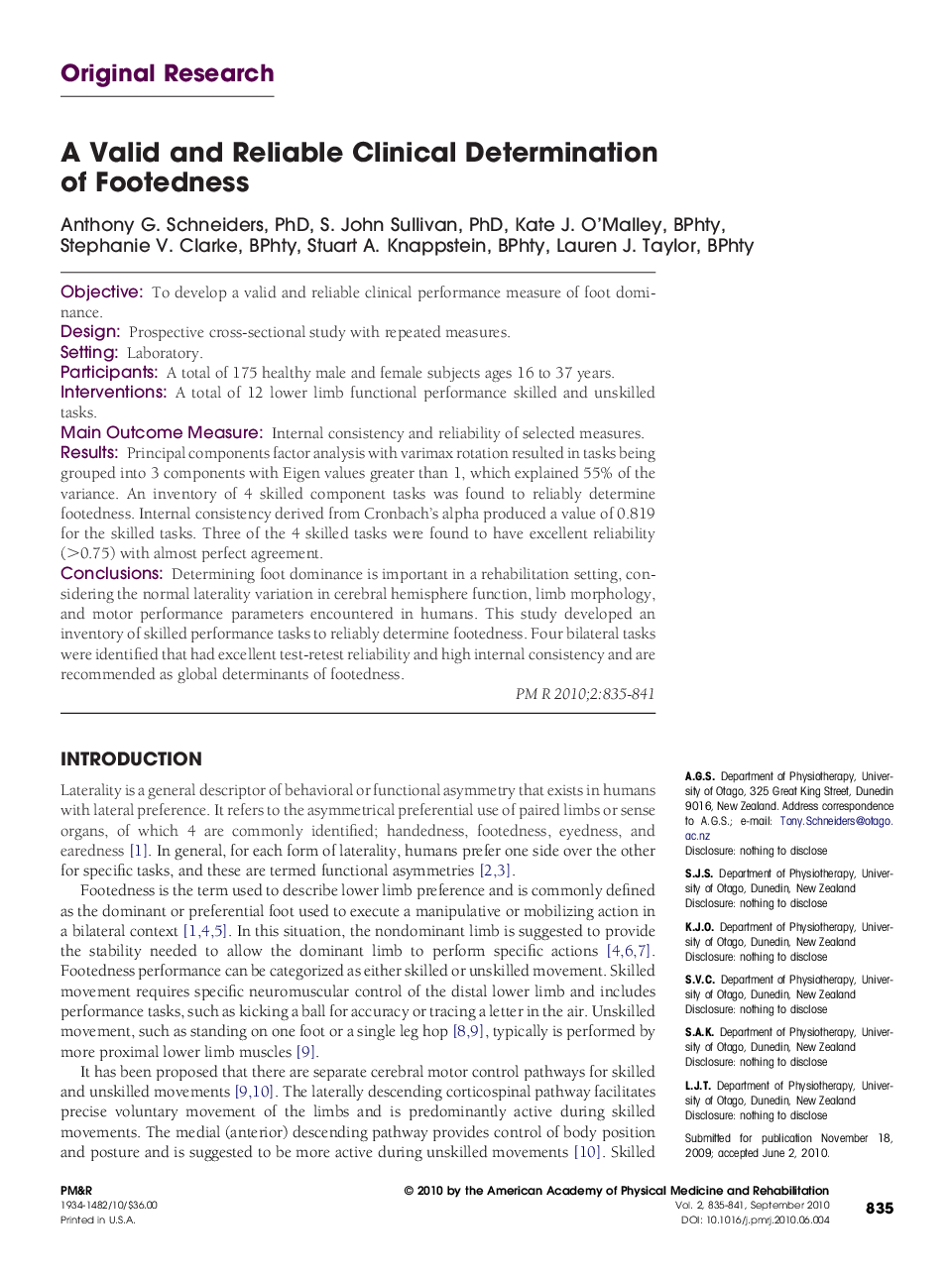| Article ID | Journal | Published Year | Pages | File Type |
|---|---|---|---|---|
| 2707989 | PM&R | 2010 | 7 Pages |
ObjectiveTo develop a valid and reliable clinical performance measure of foot dominance.DesignProspective cross-sectional study with repeated measures.SettingLaboratory.ParticipantsA total of 175 healthy male and female subjects ages 16 to 37 years.InterventionsA total of 12 lower limb functional performance skilled and unskilled tasks.Main Outcome MeasureInternal consistency and reliability of selected measures.ResultsPrincipal components factor analysis with varimax rotation resulted in tasks being grouped into 3 components with Eigen values greater than 1, which explained 55% of the variance. An inventory of 4 skilled component tasks was found to reliably determine footedness. Internal consistency derived from Cronbach's alpha produced a value of 0.819 for the skilled tasks. Three of the 4 skilled tasks were found to have excellent reliability (>0.75) with almost perfect agreement.ConclusionsDetermining foot dominance is important in a rehabilitation setting, considering the normal laterality variation in cerebral hemisphere function, limb morphology, and motor performance parameters encountered in humans. This study developed an inventory of skilled performance tasks to reliably determine footedness. Four bilateral tasks were identified that had excellent test-retest reliability and high internal consistency and are recommended as global determinants of footedness.
